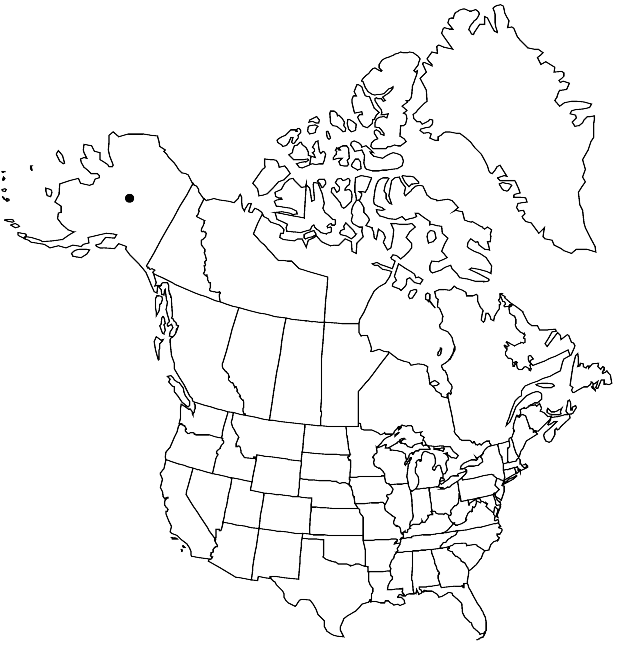Plants densely cespitose, caudex branched; leaves and scapes densely glandular. Stems 0.4–0.8 dm. Leaves: petiole 0.2–1 cm, 2–4 mm wide at base; blade obovate to broadly spatulate, 0.6–1.5 (–2) cm × 4–8 (–10) mm, base cuneate, margins coarsely dentate to subentire, apex acute. Racemes 6–16-flowered. Fruiting pedicels (proximalmost) 5–9 (–12) mm. Flowers: sepals ovate, 2.5–3.5 × 1.2–1.7 mm, eglandular; petals lavender to purple, 6–7 × 3–5 mm, claw 2–3.5 mm, apex rounded; median filaments 2.5–3 mm; anthers 0.9–1 mm. Fruits obovate to oblong, 0.8–1.4 (–1.7) cm × 5–7 mm; valves eglandular or sparsely glandular; ovules 6–8 per ovary; style 0.2–1 mm. Seeds 4–6 × 3.5–5 mm; wing 0.8–1.5 mm wide.
Phenology: Flowering Jun.
Habitat: Marbleized impure carbonate landscapes, shallow decomposed granite slopes, outcrops and hogback ridges
Elevation: 0-100 m
Discussion
Parrya nauruaq is known from the Moon Mountains, Seward Peninsula.
Selected References
None.
Lower Taxa
"elongated" is not a number."thick" is not a number."dm" is not declared as a valid unit of measurement for this property.
